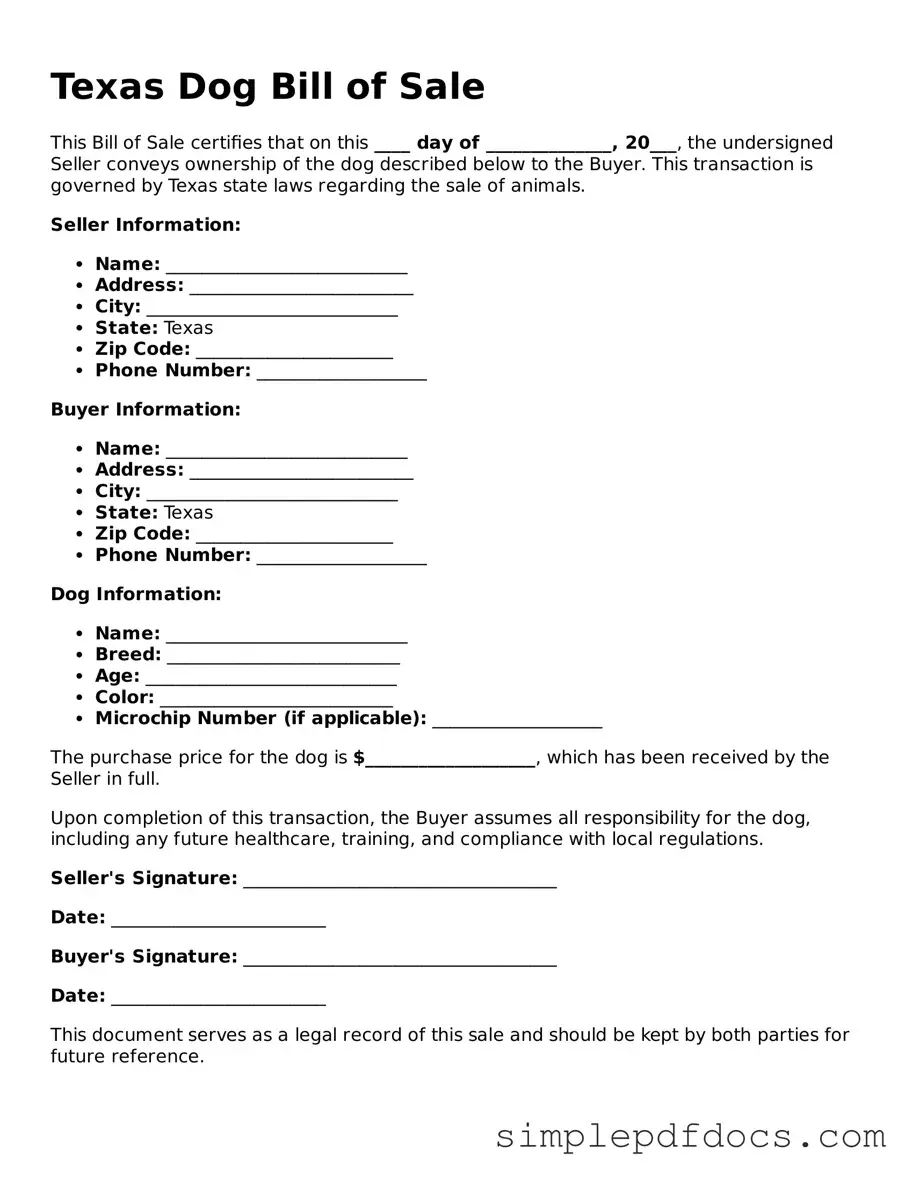Legal Dog Bill of Sale Document for the State of Texas
The Texas Dog Bill of Sale form is a legal document that facilitates the transfer of ownership of a dog from one party to another. This form not only provides proof of the transaction but also outlines important details about the dog, ensuring that both the seller and buyer are protected. Understanding this document is crucial for anyone involved in buying or selling a dog in Texas.
Get Document Here
